Lighting Decision Jam
8 min
4+

Wherever you got to solve a problem as a team Lightning Decision Jams will help you to get to solutions. An extremely powerful method, and super simple to apply.
What is a Lightning Decision Jam?
If you discuss problems as a team — no matter whether it’s a product team, management board or any other group of people — usually ends up in endless, useless, open-ended and unstructured discussions. Lightning Decision Jams will bring a structured process to solve any issue at hand. You can apply them at almost any problem at hand: improving processes or flows, planning events, taking decisions, creating strategies, …
Just get 4–6 people together in one room (make sure it’s not more than 8, otherwise it gets tricky) and block 30–90 minutes — depending on group size. If you got more than 8, maybe split the groups.
AJ&Smart came up with this just a few years ago and this article is basically just a rephrase of their original whic you can find here. You should check them out anyways, they publish great Design resources e.g. on how to run a google design sprint.
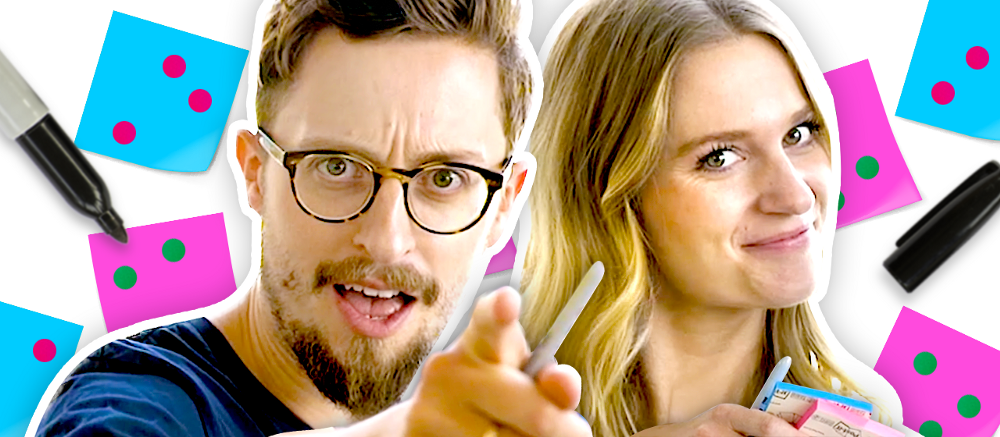
photo credits to AJ&Smart
How to do it?
You need
A whiteboard
Square sticky notes in two different colours
Rectangular sticky notes in a different colour from the square ones
Sticky dots in two different colours
Markers
A Timer
A Moderator (I’ll just assume that might be you)
Coffee and sweets always do their magic :)
Step 1: Collect all the things that go well
Timebox: 10 min Materials: The square sticky-notes (any of the two colours) + markers
Draw a boat with sails and anchor on your whiteboard. Draw it half-way below the waterline.
The sail represents things that are moving your team forward. The anchor represents stuff that holds you back. Maybe you remember the speed boat prioritization technique — it’s almost that.

Now, every team member gets about 4 minutes to write down all the things that go well — one per sticky note.
Encourage the team to write as many as possible. Select one person at a time. This person puts their positive sticky notes on the top half of the boat and explains them. No disucssions are allowed unless they are questions of understanding. Give each person no more than 1 or 2 minutes.
You won’t actually end up using these sticky-notes going forward, but it’s important to start with the positives because
thinking about positive stuff first makes it easier to find corresponding negatives in the next step.
if the group starts with negatives immediately, the atmosphere can quickly turn sour and criticism & complaining can come up, instead of problem solving.

Step 2: Collect all the problems
Timebox: 5 mins Materials: Square sticky-notes (same colour as in step 1) and markers
Now, the team spends 4 minutes writing down all the challenges, complaints, mistakes or concerns. Again, in silence and without any discussion. Usually the most important problems arise quickly.

When the 4 minutes are up, everyone puts all their sticky-notes in the bottom half of the sailboat at the same time. No presenting or explaining the sticky notes this time. This should take about 1 minute.
The reason we don’t explain the sticky notes this time is to avoid any personal criticism. The sticky-notes will speak for themselves.
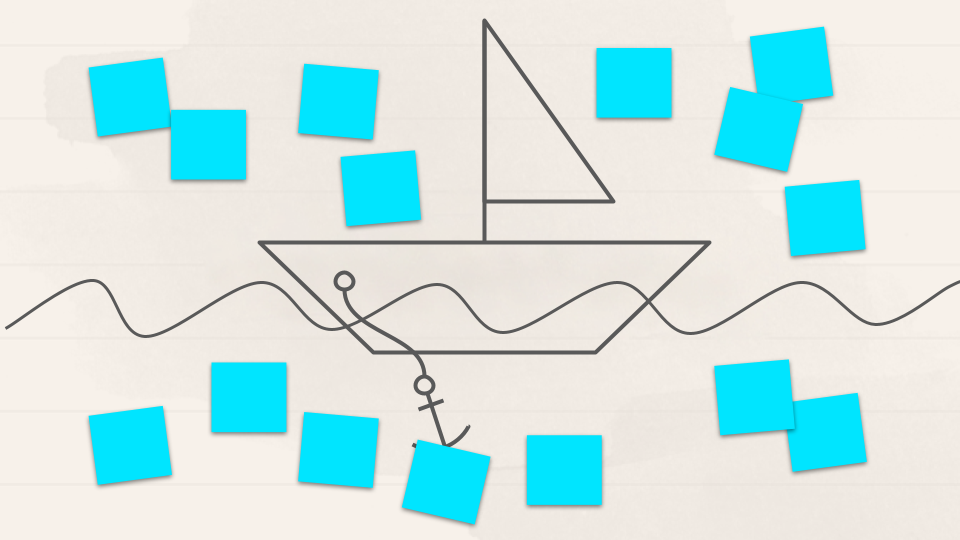
Step 3: Prioritize the problems
Timebox: 3 mins Materials: Sticky-dots
Give each team member 3 sticky dots. Everybody now votes on the challenges they consider to be the most important to solve — again, without discussion. People can put multiple dots on one note and can also vote their own notes. But, remember to only put them on the problem notes below the sea line, not the positives notes above.
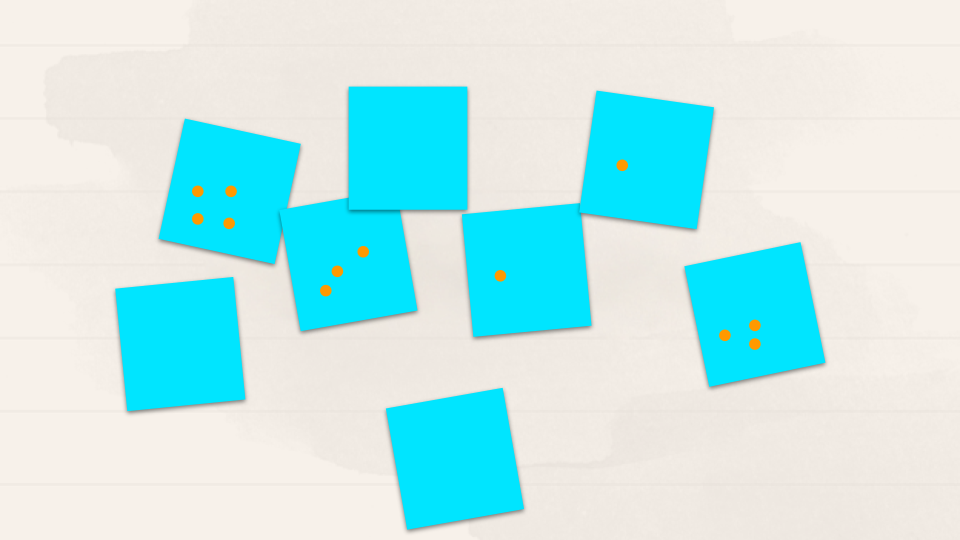
Once the 3 minutes are up, arrange the notes in order of priority.
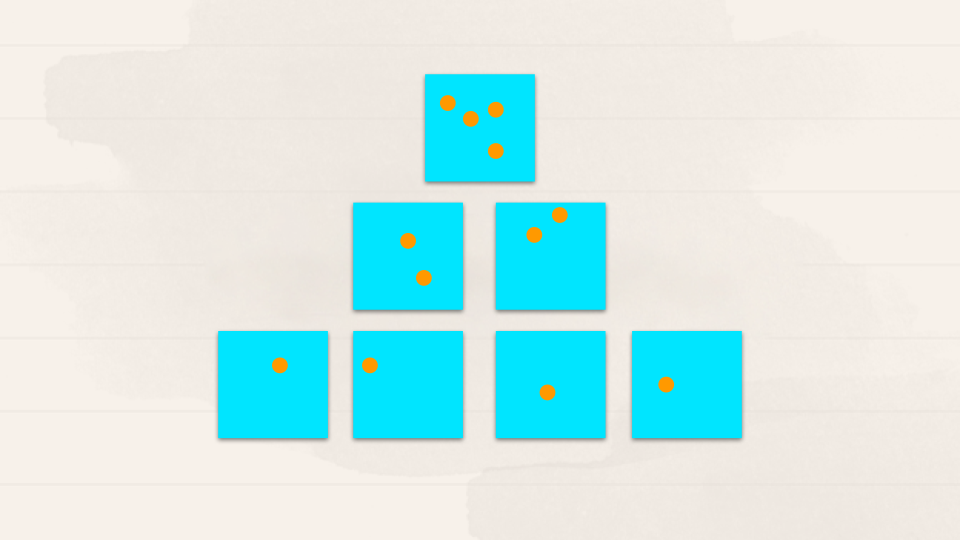
Step 4: Reframe problems as ‘how might we…?’ statements
Timeboy: 3 mins Materials: Rectangular sticky-notes + markers
Now, you re-write all the problems as ‘how might we…?’ (HMW) statements. This way you have a standardized format that helps solving the problem. You might know this from Design Sprints.
Let’s look at an example: Imagine the top voted sticky-note says “I can’t contribute because am never up to date about the status quo on current projects”. Because many people voted on it, we can see it’s clearly an issue many people are having. Here’s how that problem might be re-written into a more general statement:
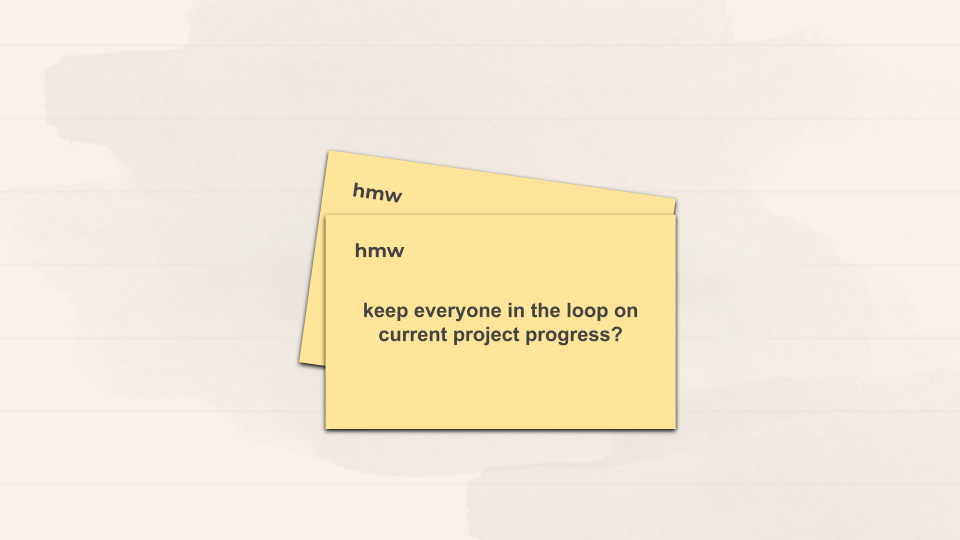
Optional:
If you want to solve more than one problem, repeat step 4 for each problem you’d like to solve, rewriting each sticky-note as a HMW. Then continue with steps 5–8, identifying solutions for multiple problems at the same time. Any problems you decide not to solve now, can go into a problem backlog and can be picked up from step 4 another day.
Step 5: Ideate on solutions— without discussion
Timebox: 6 mins Materials: Square sticky-notes (the other colour) + markers
Now, all participants get 5 minutes to write down possible solutions to the HMW problem — 1 solution per sticky note. Again, without any discussion. Removing discussion here ensures a variety of solutions. The more solutions everyone can come up with, the better. They will be curated later.
Once the 5 minutes are up, everybody sticks their ideas anywhere on the whiteboard. Again, solutions won’t be explained.
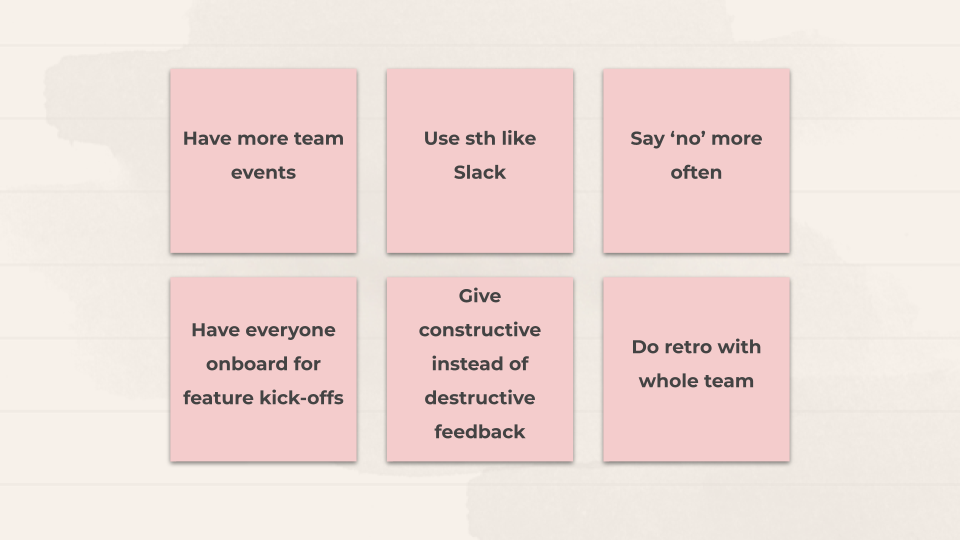
Step 6: Prioritize the solutions
Timebox: 5 mins Materials: Sticky-dots and rectangular sticky-notes
Next up, another round of voting. This time, each team member gets 6 dots and 4 minutes to vote on the solutions they think would best solve the HMW. Again, each member can add multiple dots on one sticky note and also vote for their own.
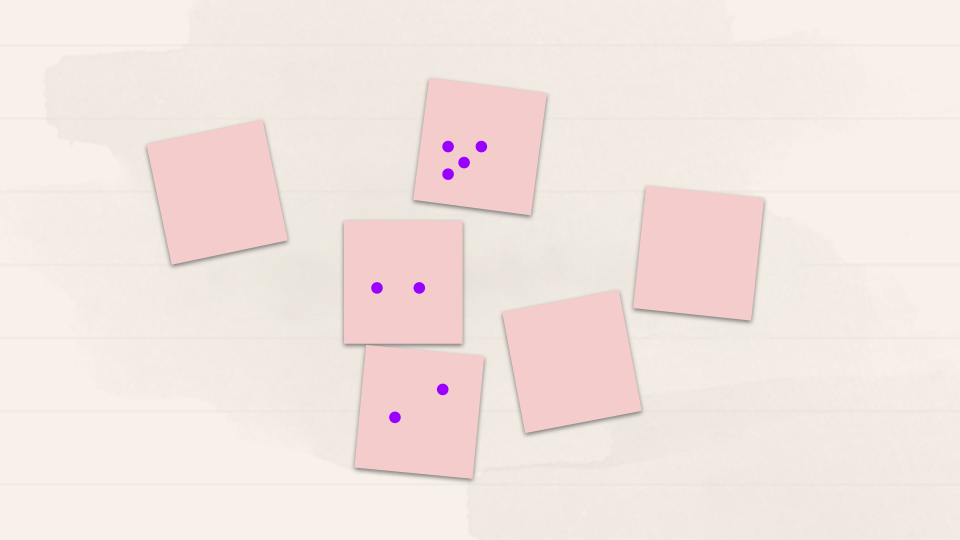
Just as with the problems, you now make a prioritised list of solutions — Ignore anything with just one vote. You should now have something that looks like this:

Step 7: Decide what to execute on
Timebox: 10 mins Materials: Whiteboard (or surface to draw the Effort-Impact matrix) + markers
Now, you want to find out which solutions to work on first. To find this out, you will draw a simple Effort-Impact matrix:
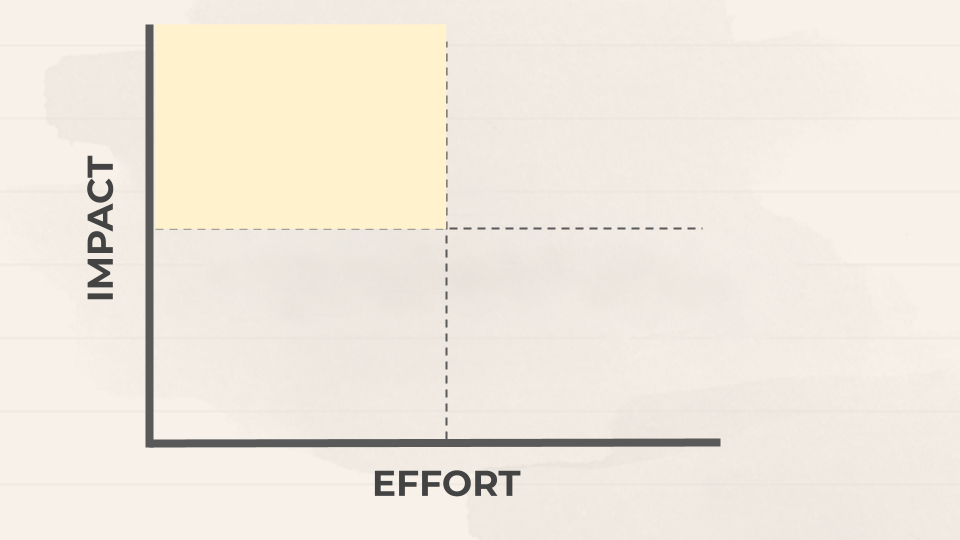
You should be very proactive at this step, because it is the only one that has a tendency to open up discussion. Take each solution one by one and add them to the effort/impact matrix. ‘Effort’ is how much time and energy the team thinks it will take to implement the solution, and ‘impact’ is the degree to which the team thinks it would solve your problem.
So here’s what the moderator (you?) needs to do:
1. Draw the Effort/Impact matrix
2. Start with Impact
a. Take the top voted solution sticky-note
b. Hover it over the center of the Effort/Impact scale
c. and simply ask “is the impact higher or lower?”
3. You should then move the sticky-note up or down the Impact axis until the team stops saying “higher” or “lower”. Often some small discussions break out here, so you have to be diligent in finding a consensus and stop any conversations extending past 20 seconds
4. Once the impact has been determined, you use the same method for effort, asking “is the effort higher or lower?”
5. This time you move the sticky-note left or right, until the group stops saying “higher” or “lower”
6. Repeat the process for the other top-voted solutions
Once the top voted sticky-notes have been added to the scale, you’ll have something that looks like this:

Et voila, now you have a set of solutions that you can easily implement: The ones in the top left quadrant. These are called low-hanging fruits or quick wins. Mark these quick wins with a different-coloured sticky dot, so that you don’t forget.
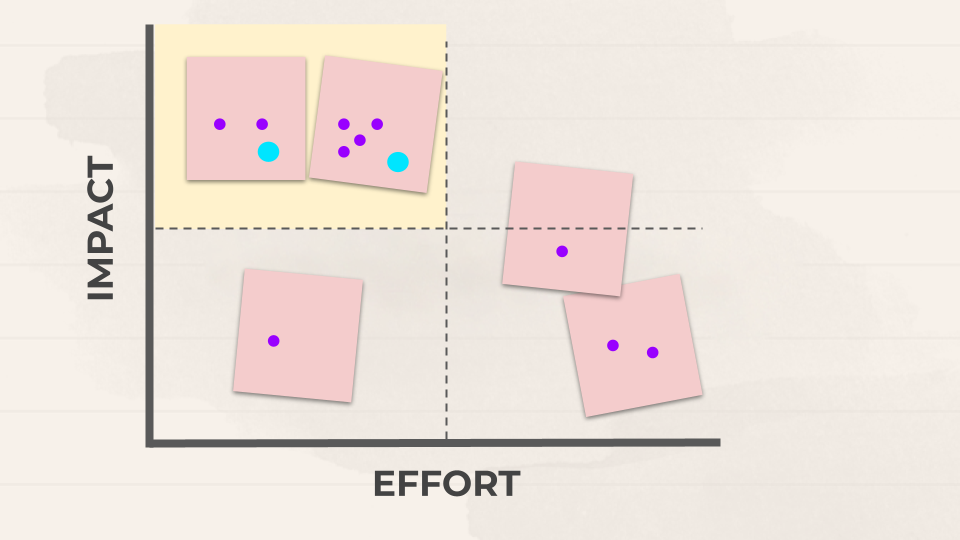
Optional:
You do not have to ignore all the other quadrants. Usually in the top right quadrant you find the solutions which have high impact but also take some time to implement. You can make a project out of them if you think it’s worth the effort.
Also the bottom left solutions could be worth implementing as they only require little effort.
Just make sure to forget about the bottom right solutions.

Step 8: Make solutions actionable
Timebox: 5 mins
Now, take the “quick win” solutions from the Effort-Impact matrix. Ask the team to come up with 3 actionable steps toward testing the solution. The person who wrote the solution may start with a suggestion. A good guiding principle is that the action steps to test out the idea should be completed in a timeframe of 1–2 weeks.
Remember, these actions steps shouldn’t outline the entire solution. Only a small version of an initial test to validate if the idea will work.
Don’t overthink it. You don’t have to necessarily pin down metrics you want to measure — although that doesn’t hurt either. The first step should be the most frictionless step, which could be done immediately. This also motivates people to just get started.
Don’t get discouraged if the solution doesn’t work after a couple of weeks. Not all solutions will solve the problem. This exercise is made to get the team used to solving problems and trying out approaches without overthinking or over-discussing.
Let’s look at one example:
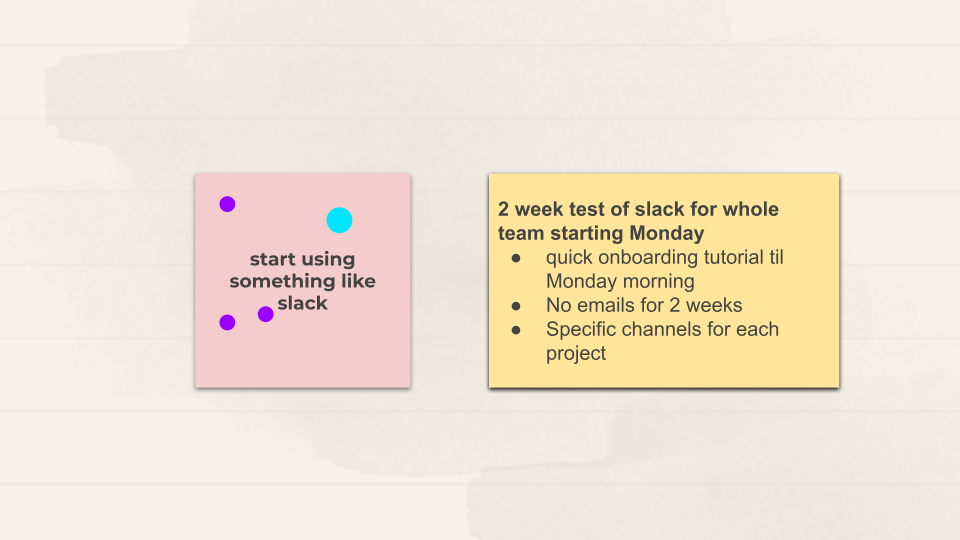
Once all these solutions are written up, your team now has actionable tasks that can be committed to. Make sure to distribute tasks to a single owner and follow-up on implementation.
As for the solutions that didn’t make it in to the top left: You can put all the higher effort solutions (from the top-right quadrant) into your backlog, so you won’t forget them. What you might see happening is that the sweet-spot actions actually end up solving the problem in a way that the higher effort solutions become obsolete!
And that’s it! In a short amount of time you were able to define important challenges, identify possible solutions and prioritise what to execute on almost entirely without discussion. Quite efficient, ain’t it?
Got questions, ideas or remarks on this method? Join the conversation on